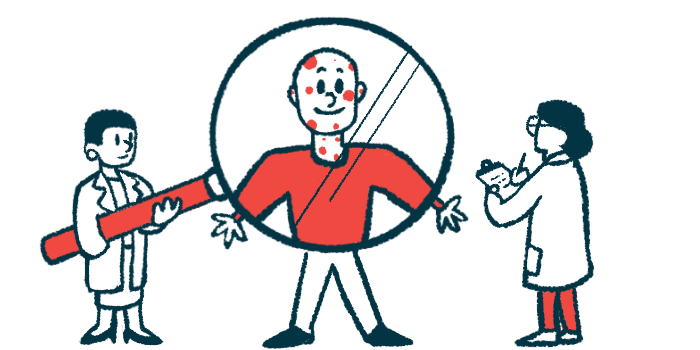Treatment a success for EDS patient, 33, with kidney stones: Report
Procedure found to be safely done with certain modifications
Written by |

Treatment of kidney stones can be safely done in people with Ehlers-Danlos syndrome (EDS) so long as certain modifications are made, a new case report from Japan highlights.
A woman in her 30s with EDS, experiencing abdominal pain, was successfully treated after clinicians took into account her physical status — carefully “selecting the instruments to be used and making intraoperative adjustments” during the procedure, they wrote.
The largest of her kidney stones was 8 mm in diameter, or nearly one-third of an inch across the middle.
The report, “A case of urinary calculus in a patient with Ehlers-Danlos syndrome,” was published in the journal IJU Case Reports.
Patient not a candidate for common treatment of kidney stones
EDS refers to a group of rare diseases affecting connective tissues throughout the body. The condition can potentially influence the function of a person’s waste removal systems, including the kidneys and bladder.
For some patients, it may be difficult to empty the bladder completely, increasing the risk of urinary tract infections.
Another potential complication is kidney stones, or the formation of hard mineral and salt deposits in the kidneys — usually as a result of highly concentrated urine — that are painful to pass.
While this complication is not known to occur more often in EDS patients than among the general population, its management may be different due to the physical limitations that EDS patients face.
Few reports exist on the management of kidney stones, or calculi, in EDS.
In this new case study, the researchers describe a 33-year-old woman with EDS who was experiencing right-sided abdominal pain. She was bedridden with a hip contracture, which occurs when a joint tightens or shortens.
In the hospital, she underwent surgery to correct severe scoliosis, an abnormal spine curvature, and received a breathing tube due to several incidences of collapsed lungs.
Abdominal imaging revealed a stone in the woman’s ureter, the tube that carries urine from the kidney to the bladder. She also had hydronephrosis, or a swollen kidney due to urine buildup, on her right side.
A common treatment for kidney stones is extracorporeal shock wave lithotripsy (ESWL), a non-invasive procedure that uses external sound waves to break up the stones.
However, due to the woman’s hip and breathing problems, it wasn’t possible for her to lay down for the procedure. Moreover, because the kidney stone was large, it was likely that multiple rounds of ESWL would be needed, raising the risk of complications.
Instead, a transurethral lithotripsy (TUL) was performed, in which a small scope is inserted directly into the ureter and uses energy pulses to break up the stone; the fragments are then removed through the urinary system.
The patient experienced some bleeding in the mucous membranes of the urinary tract, but the procedure was otherwise successful. She did not experience any signs of post-operative urinary tract infection.
Still, she was unable to completely empty her bladder, so a catheter, or thin tube, was intermittently inserted to drain urine.
We hope that this case will help establish safe treatment of upper urinary tract [kidney stones] in patients with EDS.
The researchers believe the woman’s kidney stones arose from low fluid intake, making her urine very concentrated with salts and minerals.
Overall, the case highlights that “TUL can be safely performed,” in EDS patients, the researchers wrote.
“We hope that this case will help establish safe treatment of upper urinary tract calculi in patients with EDS,” the team concluded.



